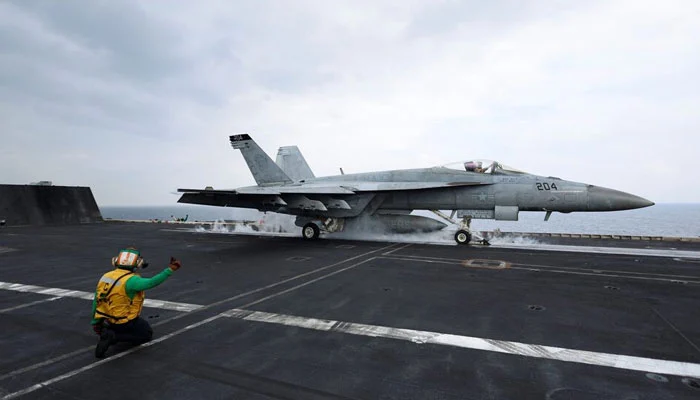The United States (US ) oversees a network of military bases across the Middle East, forming the backbone of its regional presence. With approximately 40,000–45,000 personnel stationed in key countries—such as Qatar, Bahrain, Kuwait, UAE, Iraq, Syria, Jordan, Saudi Arabia, Oman, and others—these installations support counterterrorism, maritime security, intelligence operations, and deterrence initiatives against adversaries like Iran .
Major Air Bases
- Al Udeid Air Base (Qatar): The largest U.S. base in the region houses CENTCOM’s forward headquarters and hosts 8,000–10,000 personnel. It supports air operations across Iraq, Syria, and beyond .
- Al Dhafra Air Base (UAE): Surrounding 3,500 personnel, this base supports aerial refueling, reconnaissance, drone, and missile defense missions .
- Incirlik Air Base (Turkey): Co‑managed with Turkish forces, this base enables operations into northern Syria and Iraq. It also reportedly stores U.S. tactical nuclear bombs under NATO agreements .
- Prince Sultan Air Base & Other Facilities (Saudi Arabia, Oman): These serve as forward deployment hubs and logistics platforms, hosting fighter jets, missile defense systems, and support infrastructure.
Land and Logistics Hubs
- Camp Arifjan (Kuwait): Houses around 7,000 personnel; it functions as a major logistics and maintenance center .
- Camp Buehring (Kuwait): Functions as a primary staging area for deployment into Iraq .
Naval Bases and Sea Power
- Naval Support Activity Bahrain: Home to the U.S. Fifth Fleet with some 7,000 crew members; coordinates patrols throughout the Gulf and the Red Sea .
- U.S. Carrier Strike Groups: Multiple carriers—including the USS Carl Vinson, Nimitz, Gerald Ford, Eisenhower, and Truman—are regularly rotated into the region to maintain naval dominance and intercept hostile activity .
Forward Operating Bases in Conflict Zones
- Al Asad Air Base, Iraq: Supports ongoing advisory roles and counter-terrorism missions with roughly 2,000 personnel .
- Syria Outposts: U.S. personnel continue advising Kurdish-aligned forces; small garrisons at locations like al-Omar, al-Shaddadi, and Al-Tanf collectively house around 900 troops.
Operational Roles and Recent Reinforcements
- Counterterrorism: U.S. forces are engaged in active operations against ISIS and similar groups in Iraq and Syria .
- Deterring Iran: Air defense systems—such as Patriot and THAAD—and carrier groups serve as a visible deterrent against Iranian aggression .
- Maritime Security: The Fifth Fleet and accompanying naval assets protect shipping lanes, counter militia threats (e.g., Houthi attacks), and secure sea routes in the Gulf and Red Sea .
- Allied Training and Intelligence: U.S. forces conduct joint exercises and share intelligence with partners like Jordan, UAE, and Saudi Arabia to enhance operational cooperation .
Recent Build‑Up Amid Regional Tensions
In response to the intensifying conflict between Israel and Iran, the U.S. has surged military assets, including repositioning F‑16s, F‑22s, F‑35s, aerial refueling tankers, Patriot/THAAD batteries, and deploying multiple carrier strike groups, most notably the Gerald Ford in Mediterranean waters . These moves aim to protect personnel and stabilize volatile areas .





